“Don’t Worry Darling” Cinematographer Matthew Libatique on Creating a Sinister World Beneath the Surface
There’s a menacing unreality looming beneath the surface in Olivia Wilde’s Don’t Worry Darling that cinematographer Matthew Libatique (The Whale, A Star is Born) stitched together through a tapestry of largely subliminal clues, subconsciously pinning you to the story’s shocking twist.
Midsommar scene-stealer Florence Pugh steps into the role of Alice Chambers, a young housewife living her best life circa the 1950s. She’s married to a handsome, hardworking husband named Jack (Harry Styles), who can’t keep his hands off her, and has a beautiful home in the flourishing community of Victory, where her effervescent neighbors couldn’t be more cut from Barbie’s cloth. She shops, drinks, and attends parties. What more could she ask for?
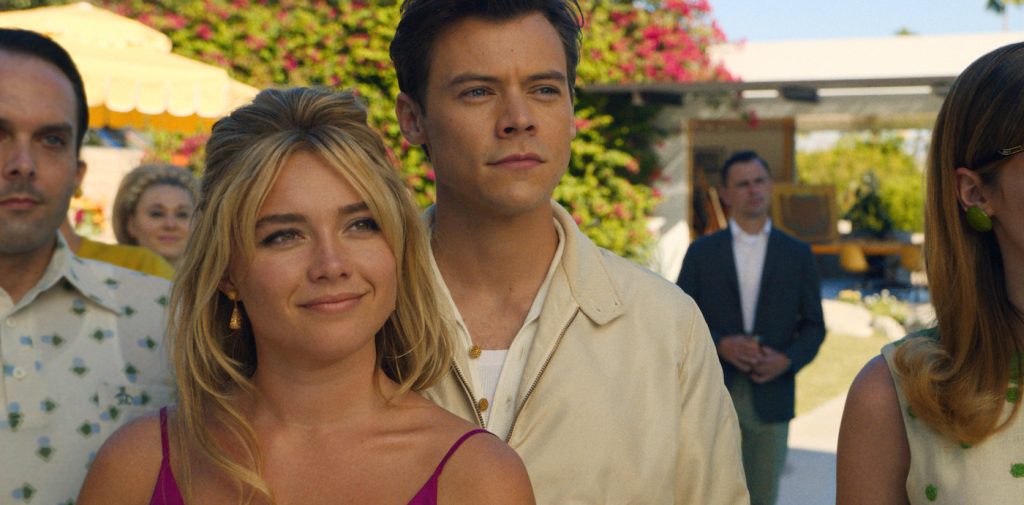
In designing the palette, Libatique spoke with Wilde about the atmosphere beneath the surface. The film’s themes eventually reveal themselves—manipulation, control, and the chimera of living a perfect life—which are filtered through an increasingly unnerving psychological drama doused with sexual energy. The cinematographer curated a dreamy visual language that reflected the color, shine, and brilliance of what production designer Katie Bryan and costume designer Arianne Phillips established early on.
For the neighborhood of Victory, where Alice and Jack reside nestled in a picturesque cul-de-sac, the Palm Springs planned community of Canyon View Estates stood in. Warm, earthy hues were balanced with natural sunlight to heighten the bespoke environment. “It’s an aspirational world in this idyllic place, and obviously in the film, it gets turned upside down, but the whole idea is to transport our audience,” the two-time Oscar nominee tells The Credits.
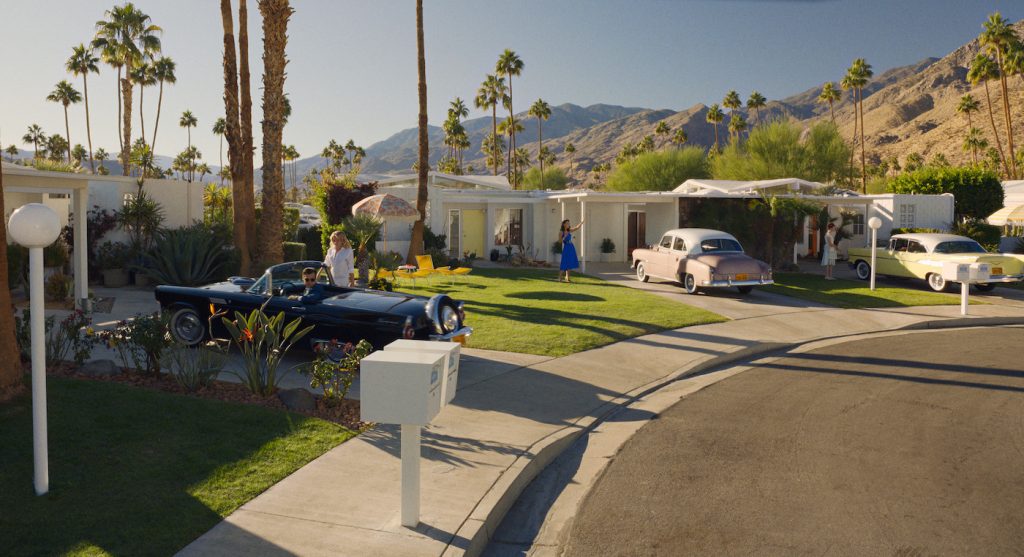
Libatique’s driving philosophy while filming was to motivate exterior and interior lighting based on the sun. Fortunate to shoot in the hot Palm Springs desert during November allowed the Black Swan cinematographer to take advantage of the lower-angled rays of sunlight that would fill Alice’s home, which was a designed set. “It didn’t matter if we were going to cut outside or not; the plan was to honor the path of the sun at the actual location,” he says. “If it was morning, we knew the sun would come from behind the house. If Jack was coming home at the end of the day, the sun would set in front of the house. In my mind, the audience registers the continuity in the way the sun falls between location and set, so it was one of the directions I gave my crew. It was really important to create such a reality in the house.”
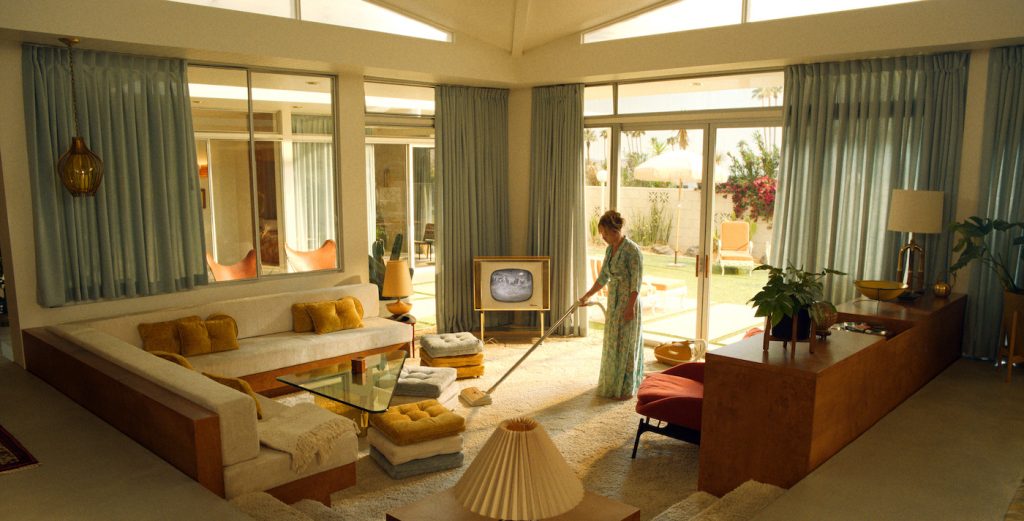
The interior of the couple’s home was period-perfect, designed with creamy hues and muted pastels. But it’s all a façade. To speak to the ruse, Libatique chose Blackwing lenses, which have more aberration and flare to add to the distorted reality. “I wanted there to be a sort of happy accident to the imperfections just because I knew that the design was meticulous,” he says.
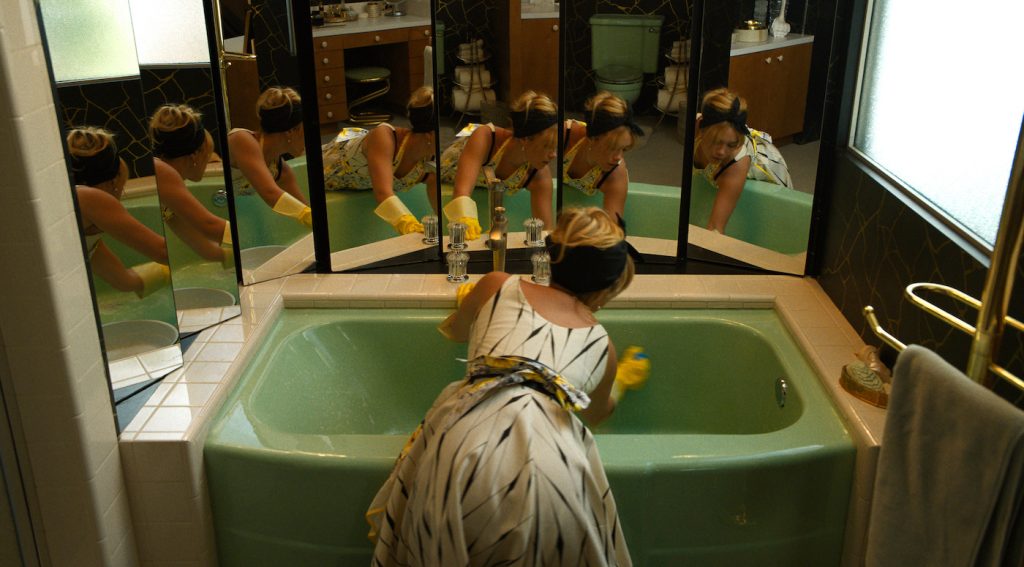
For certain exterior sequences, Sigma Classic Primes were used for their low contrast and flare to express desolation and heat.
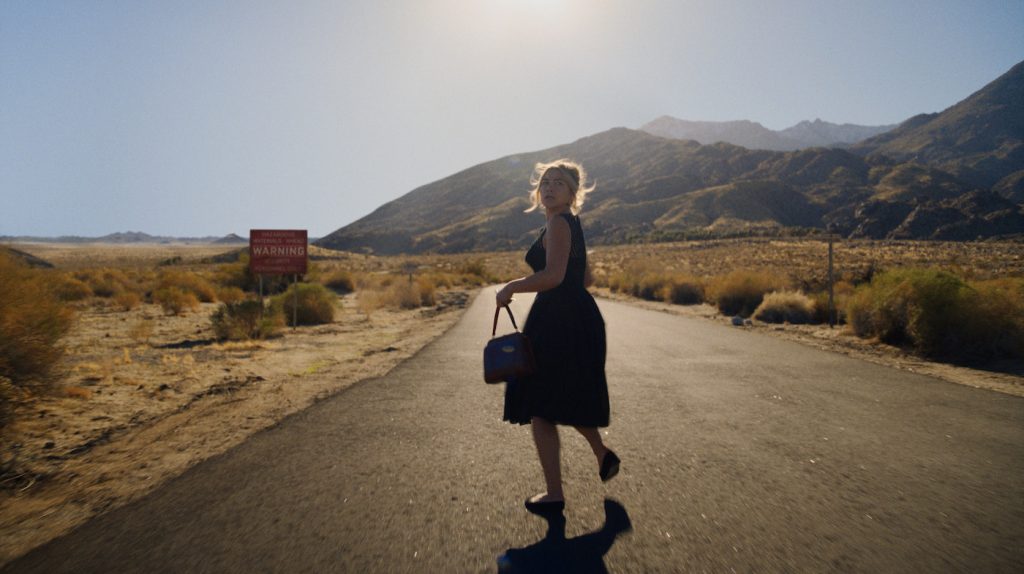
Other striking locations Libatique shot were Richard Neutra’s Kaufmann House, made famous by Slim Aarons’ “Poolside Gossip” photo, which stood in for the home of Jack’s boss Frank (Chris Pine) and his wife Shelley (Gemma Chan). The Cicada Restaurant and Lounge in downtown Los Angeles stirred a wild party scene with Jack and Frank dancing to a live band. Harold James Bissner, Jr.’s flying-saucer-shaped Volcano House became the headquarters for the Victory Project, as well as a climactic action sequence that has Alice racing up its hilltop as she’s being chased by men trying to capture her.
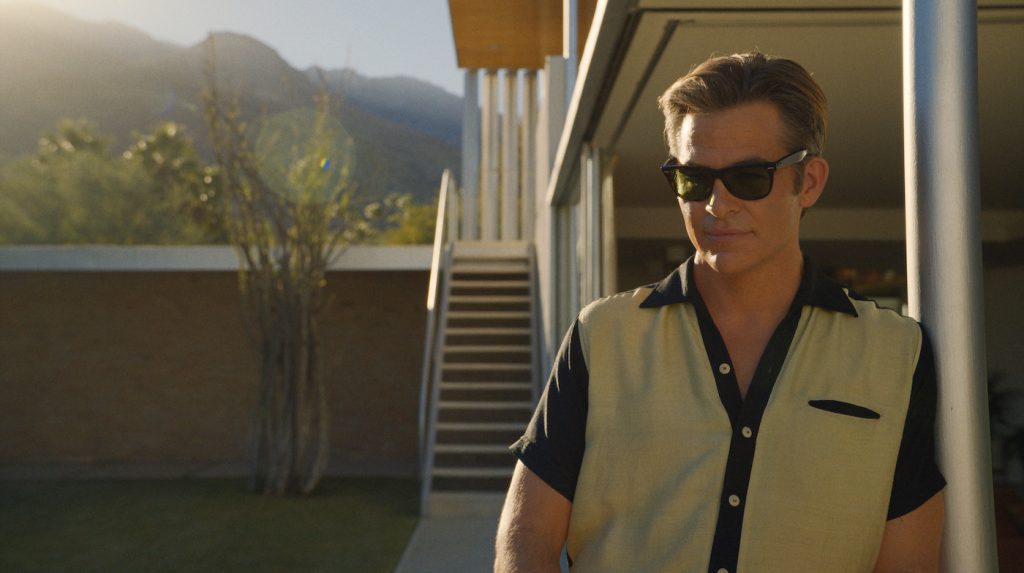
To bring the riveting moment together, Wilde and Libatique laid the foundation in prep with a storyboard artist, where they continued to tune the action through reference material. “Creatively, we wanted to capture Pugh’s performance, so making sure we had the right equipment was important. We put the car on a Biscuit Rig, which is a drivable base that the car can sit on, and the actor can actually focus on performance while seemingly driving,” says Libatique. “I think that was the biggest win in the sequence because we could interject Florence and intercut her with the car-to-car work we did with an amazing stunt driver. We destroyed that car. It was incredible.”
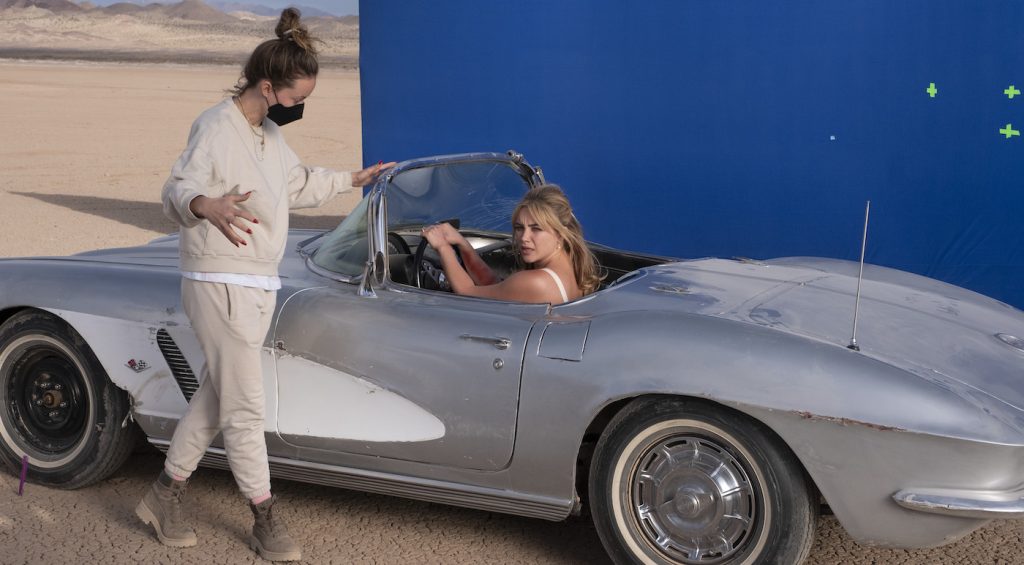
As fulfilling as the chase sequence was, intimately framing Alice’s journey was key for the cinematographer. Libatique compositionally kept the camera close to Pugh. “We had many moments where Alice is by herself, so we could focus on her and then carry that same language over to other scenes involving more of the cast.”
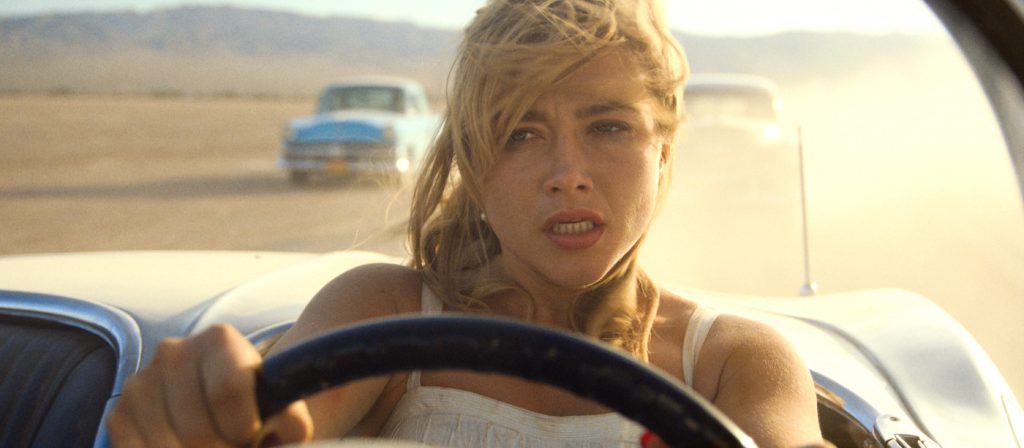
Juxtaposing her emotions and the world around her provided a window into her thoughts while adding scale. When Alice starts to question her surroundings (which is dynamically on display during a tense dinner scene between Pugh and Pine), visual metaphors in the shape of an eye flash on screen, including burlesque dancers shown in black and white. “It’s a great example of the depth of Olivia’s creativity,” Libatique says. “For her, it symbolized women as an object and then layering the idea into the shape of an eye tied it to the captivity and the mind of Alice.”
Don’t Worry Darling is in theaters now.
For more on Warner Bros., HBO, and HBO Max, check out these stories:
HBO Max Releases Long-Awaited & Decidedly Creepy Teaser Trailer for “The Last of Us”
Inside “House of the Dragon” Episode 6
New “Black Adam” Teaser Opens With a Nod to Batman, Superman & More
Featured image: Caption: (L-r) HARRY STYLES as Jack and FLORENCE PUGH as Alice in New Line Cinema’s “DON’T WORRY DARLING,” a Warner Bros. Pictures release. Photo Credit: Courtesy of Warner Bros. Pictures



